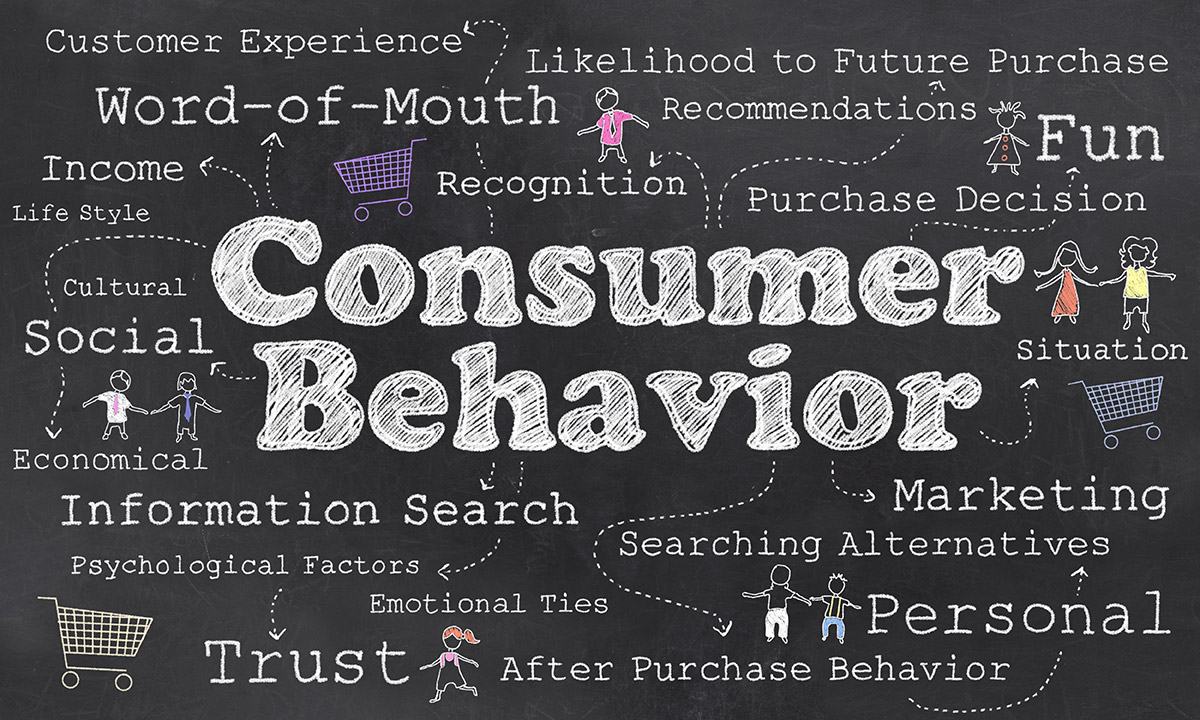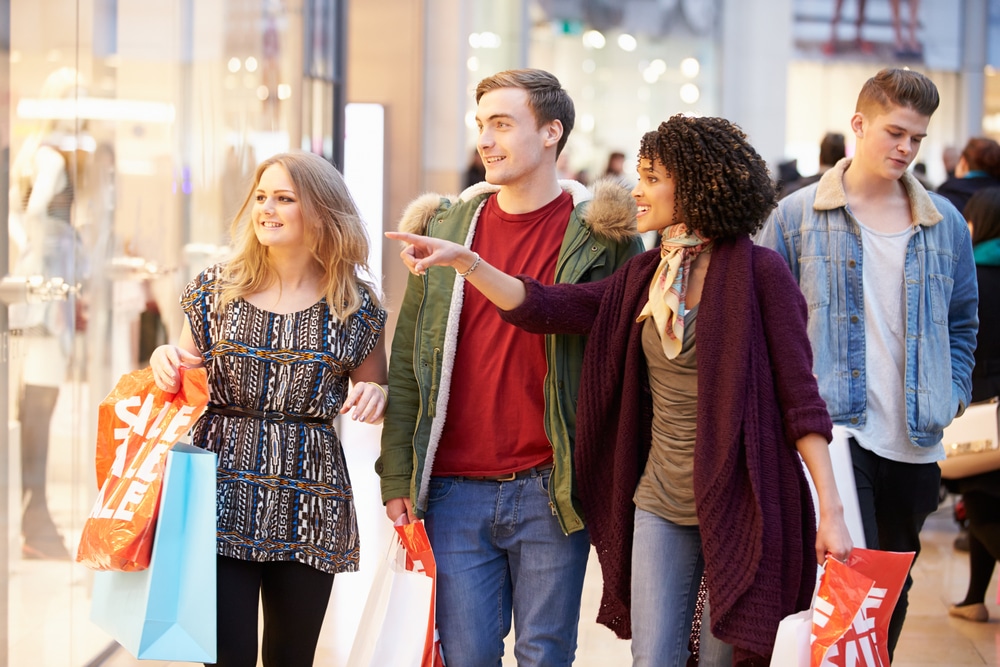A shopping mall is a place where people can visit even to window shop and still end up enjoying the experience. Continue reading “How to create an immersive retail experience”
Category: b2b
How AI is reshaping customer engagement

Artificial intelligence is being used by marketers in new ways and strengthening customer engagement is one of them. Continue reading “How AI is reshaping customer engagement”
Why CPG brands should explore creative ways to attract customers

When it comes to creative ways to attract customers, CPG brands should consider how mobile apps can improve their business models. Continue reading “Why CPG brands should explore creative ways to attract customers”
A marketer’s guide to programmatic advertising

A marketer’s guide to programmatic advertising
By 2020, marketers will spend $69 billion in programmatic ad buys, which will account for almost 90% of total online digital display advertising in the US. As so much money is invested in this type of advertising, it’s imperative that marketers making ad buying decisions understand the options, as well as the technical details of how programmatic advertising works. Through this, they can make informed decisions that drive sales.
The Technical Details of How Programmatic Advertising Works
Programmatic advertising is a form of data-driven marketing which allows users to leverage platforms to automatically buy ad space based on pre-set criteria. Primarily, it involves three separate components:
Demand Side Platforms:
DSPs are where marketers buy ad inventory. They facilitate the process by allowing marketers to purchase ads in a variety of spaces. An example of this includes the Google Ad Manager, which enables brands to display advertisements when specific, targeted keywords are searched, as well as show their ads on certain websites, among other options.
Supply Side Platforms:
The SSP is the publisher side of the platform, where sites can offer unsold ad space to the general public or a select group of brands. The publisher can connect with multiple DSPs to sell their free space and monetize websites.
Data Management Platforms:
DMPs allow brands to target their advertising by using data to better understand their audience. Such platforms collect details from website cookies to understand user buying behavior, and create groups marketers can target to ensure their best chance of sales conversion.
Targeting Options in Programmatic Advertising
Often, programmatic advertising is mistaken for “real-time bidding,” a common type of programmatic advertising where brands can target users based on the keywords they search. However, this is not the only option for targeting users. Brands can get much more detailed, as DMPs give them access to a wide range of information, including:
Individual online behavior:
The pages individuals check and sites they frequent can provide indications on their future purchase behaviors. The followers of a famous makeup artist on YouTube, for example, would also be strong targets for a makeup brand selling their wares on Facebook.
Purchasing affinity:
Purchase affinity goes a bit deeper than simple browsing preference as it creates context. An individual who leaves a positive review of a brand’s product on a popular site will be more likely to make future purchases, as they have an existing positive brand affinity.
Purchasing history:
Many individuals are surprised to learn that their actual purchases are trackable when using credit cards or other digital funding methods. While details like credit card information aren’t available, information like what consumers purchased and when is often visible to brands that wish to pay for the privilege of seeing it.
Net worth/income:
Information individuals post on an online resume site or through their credit report can often be used to estimate their annual household income, net worth, and other financial factors.
Inferred lifestyle choices:
This is a general category that isn’t always accurate but can become so with more data. For example, an individual with a high net worth, who purchases high-end makeup regularly, could also be assumed to have an interest in luxury fashion, making them an ideal candidate for targeted marketing. The more data the brand has available, the more likely their predictions are to be accurate.
The Benefits of Programmatic Advertising
Brands can enjoy increased efficiency, better tracking, and a stronger ROI through programmatic ad buys. Here are just a few of the ways programmatic advertising offers brands improved marketing.
Increased reach:
The most apparent benefit of programmatic marketing is the ability to reach millions of buyers at once through the click of a few buttons. Google alone gets an estimated 40,000 searches per second, meaning that brands will always have a broad audience to reach when advertising on or through the search engine.
Ease of use:
Programmatic advertising is relatively easy to learn, and providers focus on the user experience to ensure ease of use. It’s far more straightforward than the old process of requests for proposals, negotiations, and manual insertion orders that took time, effort, and a lot more know-how.
Simplified ROI tracking:
Understanding the ROI on a programmatic ad buy is relatively simple, as the tracking from ad display to conversion is typically automatic. This process simplifies budgeting and helps companies determine precisely how much they should spend on this venue for the best results.
Enhanced data and insights:
Brands can learn a lot about their target market by looking at the results and conversion of their programs. They can discover niche communities with loyal followers and further enhance their marketing to improve their ROI.
Personalization:
The final benefit for programmatic advertising comes on the consumer’s end. When a consumer sees an ad which is more relevant to them, it creates a personalized connection which can spur positive brand affinity.
The Challenges of Programmatic Advertising
Programmatic advertising isn’t a magic bullet for marketers, especially for those new to online optimization. While the platforms themselves are easy to use, a lot is going on behind the scenes which creates limited effectiveness. Here are just a few of the challenges marketers face with programmatic marketing.
Location limitations:
While marketers can certainly use location as a basis in their search, there are some limitations to this—especially when consumers are in the shopping aisle. When advertising at a brand level, the ability to reach consumers as they make a purchase is crucial. However, tracking real-time GPS data is not a possibility in these types of ad buys as it would be considered an invasion of the consumer’s privacy. Brands can only connect with consumers who permit GPS tracking through a retail, shopping, or branded app.
Ad fraud risk:
Not all providers of advertising space are equal. Brands must contend with malicious traffic created by bots, which could inflate effectiveness and limit the overall ROI. Carefully vetting ad providers can ensure brands reach an audience that will provide genuine sales.
Cost:
Programmatic advertising can be expensive, especially when dealing with competitive keywords or high-value platforms. It’s impossible to target every platform, so it can be challenging to pinpoint the most profitable avenues without investing in less effective ones.
Market saturation:
The programmatic market is valuable, which is why so many brands are already on board. The more individuals participate, the more expensive it will get. Consumers may go “ad blind” by seeing too many sidebars and headline ads, choose to skip them, or install ad blocking software to eliminate them, making programmatic less effective.
Alternatives to Programmatic Advertising
Brands can seek out new methods to reach consumers on an automatic basis without the need for programmatic advertising. This is an opportunity found through third-party apps. Third-party apps work based on user permission, so it’s possible to reach consumers based on their location and as they travel. They also provide a less competitive space, as brands can pick and choose the companies they work with for the best results.
Third-party apps can help bridge the gaps in programmatic advertising by allowing brands to reach traveling consumers, especially as they’re about to make a purchase. They can drive consumers to products in the shopping aisle, which enhances any overall digital marketing program and increases sales.
The Future of Programmatic Advertising
Programmatic advertising is expected to reach platforms outside of regular websites and even mobile apps in the years to come. Smart speakers serve as a prime example. While voice ordering is still a relatively new option, programmatic advertising could enter this realm and allow brands to gain audio air space when consumers interact with their smart devices.
3 types of product positioning strategies and how to best leverage them

As gaining shelf space becomes more competitive for brands, marketers should be looking into leveraging one of the various types of product positioning strategies. Continue reading “3 types of product positioning strategies and how to best leverage them”
Customer retention marketing: 3 ways to maintain customer loyalty

In our customer-centered economy, where competitors would gladly engage with those your business has overlooked, customer retention is more important than ever before. Continue reading “Customer retention marketing: 3 ways to maintain customer loyalty”
What to include in your product awareness campaign

The elements of a product awareness campaign should tie in the what, where, and when of a new product release. Continue reading “What to include in your product awareness campaign”
How to increase sales without lowering price

There’s nothing wrong with offering a deal on your product; especially since shoppers are always on the hunt for a bargain. Continue reading “How to increase sales without lowering price”
5 Foundations for Inspiring Loyalty From the Modern Consumer

The way that consumers shop has changed significantly over the past decade, but many brands and retailers have failed to create loyalty programs that evolve with the CPG landscape and its savvy consumers. In fact, more than half of the customers that signed up for loyalty programs aren’t even using them. Continue reading “5 Foundations for Inspiring Loyalty From the Modern Consumer”
Extended reach: 3 effective mobile marketing strategies

CPG brands must be able to effectively utilize mobile marketing strategies to connect with consumers in the store and online. Continue reading “Extended reach: 3 effective mobile marketing strategies”
Understanding the factors influencing consumer behavior

Understanding the factors influencing consumer behavior
When it comes to CPG purchases, consumers can change their minds very quickly because oftentimes the purchase isn’t seen as something with long-term consequences. The low price point of these products makes consumers more willing to try new things and deviate from their existing purchase patterns. Brands can further drive purchase decisions by offering rewards programs and incentives that encourage consumers to test out new products.
Breaking Down the Factors Influencing Consumer Behavior
Cracking the code to consumer behavior has long been a goal of marketers. By understanding why they purchase, marketers can address those issues and improve advertising. The factors that influence consumer behavior can be broken down into four comprehensive categories.
Market culture:
The culture within the market will determine the consumer’s overall desire for a particular product. For example, a discount baby supply store would not likely do well in a neighborhood populated with millionaire retirees, but would be an excellent addition to a community where a lot of middle-class families live, perhaps near an elementary or nursery school. The market in that particular area would likely be rife with potential consumers, while the retiree’s neighborhood wouldn’t have as many.
Social circles:
People are tied together through the individuals they affiliate with, be it family members or just those who share the same hobbies and interests. Within these social circles will be individuals who make purchase decisions, those who influence purchase decisions, and those who follow them. Consider a traditional nuclear family. One parent might request certain products at the store; the other will do the shopping and take their requests into account. Meanwhile, the children in the household will accept the decisions made between the decision maker and influencer, and later on may choose those brands because they were introduced to them by their parents.
Personal preferences:
Personal preferences are the conscious things people choose for themselves, like the brands they’re loyal to as well as the products they avoid. These preferences often change with age and life circumstances. They can also be impacted by consumers social circles, and the culture in the market where they live. Brands that market to niche groups, like challenger brands, often focus strictly on personal preferences as a matter of marketing as this provides a more authentic feel to advertising.
Psychological triggers:
Psychological triggers can tie into personal preference, but really, they’re about subconscious decisions rather than active ones. Things consumers see, hear, taste, touch, and smell, can trigger positive or negative reactions which brands can use to drive sales. Consider how many brands use the color blue prominently in their logos. The color triggers a feeling of trust and security which brands can impart to their products by using it in their advertising.
Catering to a Culture With Location-Based Mobile Marketing
Location-based mobile marketing allows brands to connect with a specific community and engage users based on the culture of that community. Levi’s gave us a prime example of this when they partnered with Disney and Snapchat on a location-based augmented reality campaign.
Visitors to the store received a Snapchat notification through which they could access a limited time deal. Through an augmented reality feature, they were able to see and even virtually try on a Disney-themed Levi’s hat while at the location. Additionally, shoppers could order the hat through the Snapchat app and have it delivered to their hotel as a souvenir from their vacation.
Exclusivity and an understanding of the market culture helped to make this campaign a success. This is a strategy other brands can leverage by understanding their unique selling points and how they impact the market where they are available. By providing a location-based, limited-time deal, brands can drive consumers to make purchases and enhance the customer experience.
Engaging Social Circles With Interactive Campaigns
Many brands choose to work with influencers to reach a wider audience. However, such relationships don’t always pay off, as influencers may not have the capacity to inspire people to make purchases. It’s far more likely that individuals will be interested in the opinions of those they know. In fact, nearly half of consumers say that recommendations from friends and family members have driven their decision to make purchases.
This is something that Kellogg’s leveraged with their Super Bowl LIII ad for their chip brand Pringles. The brand ran an interactive, livestreaming connected TV (CTV) campaign during the Super Bowl. The campaign served two versions of shoppable experiences, allowing viewers to interact with them via the CBS Sports app on Apple TV. One version of the campaign, which changed a city name based on a user’s geography and revealed different Pringles chip combinations upon swiping, generated over 6.4% engagement.
This strategy helped consumers remember the brand and participate, which also drove them to discuss it with friends and family who could be influenced by the second-hand knowledge. Additionally, the campaign reached consumers on a personal level. Such personalization humanizes brands and creates a connection which can drive purchases.
Using Personalization to Connect With Consumers
Personalization is a bit of a buzzword in the marketing space, and there are many definitions of what qualifies as “personalized.” For some brands, it may mean merely adding the recipient’s name to the beginning of an email. To others, it might include targeted messages that take into account their favorite brands and previous search history.
Registries are an excellent opportunity to both connect with consumers and gain the attention of their friends and family members. By adding an intelligent chatbot, Walmart made themselves stand out in a competitive space.
Creating a Positive Consumer Experience Through Virtual Greetings
One of the final factors influencing consumer behavior comes from psychological triggers. Colors, smells, and even feelings can put consumers in a positive purchase mindset which drives them to make purchases.
This is a strategy that Shopkick leverages in many of its campaigns, by using branded entrance messages to create both a positive experience for the consumers and top-of-mind awareness for brands. Bomb Pop chose to partner with Shopkick for such a campaign in the lead up to the Fourth of July.
It’s possible to leverage multiple factors influencing consumer behavior to drive sales through a single campaign. Often, in attempting to target one of these factors, brands cross over into other areas. As such, these strategies are ideal for reaching consumers on multiple fronts, whether brands want to trigger certain psychological behaviors or connect to an entire market. By reviewing some successful marketing campaigns related to these factors, brands can better understand consumer purchase behaviors to improve their sales overall.
Why your brand needs a partnership marketing strategy

There are many ways brands can leverage a partnership marketing strategy to grow their customer base and their overall sales. Continue reading “Why your brand needs a partnership marketing strategy”

